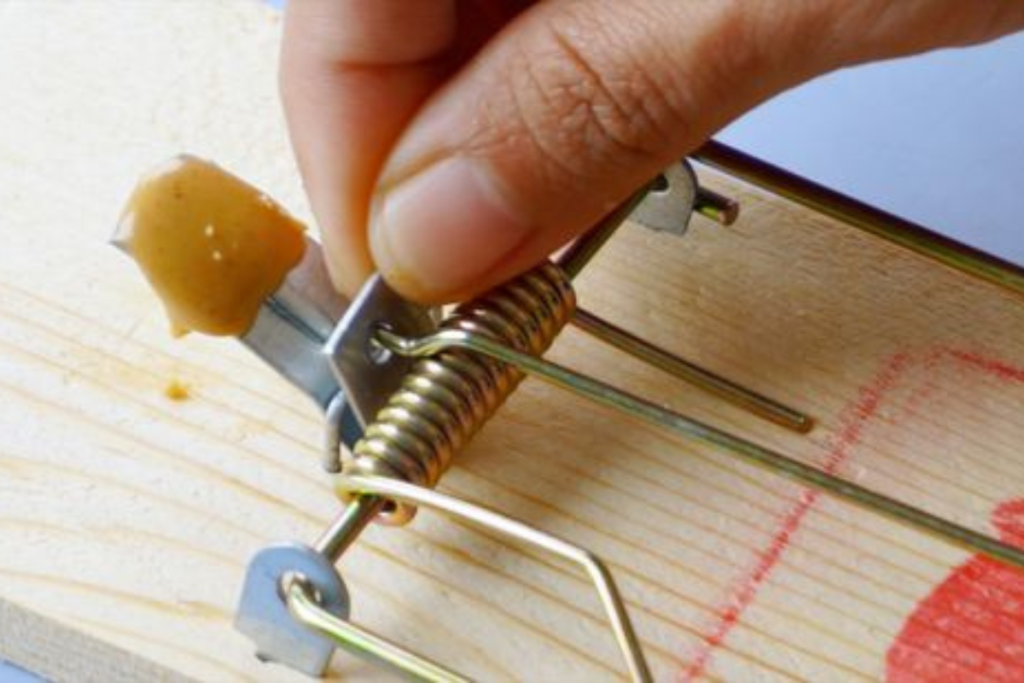How to set a mouse trap spring?
The art of setting mouse trap springs! Mastering this simple yet crucial technique can turn you into a vermin-vanquishing pro. Follow these steps carefully, and soon you’ll be springing into action with confidence and precision.
Preparing the Mouse Trap
The trap spring, it’s crucial to ensure everything is in tip-top shape and ready to go. The essential steps of preparing your mouse trap for action.
Inspection of the Trap
First things first, give your trap a thorough once-over. Check for any signs of damage or defects that could compromise its effectiveness. A broken or faulty trap won’t do you any favors in the battle against rodents.
Selection of Appropriate Bait
Once you’ve confirmed that your trap is in good condition, it’s time to choose the perfect bait. Mice are attracted to strong smells and flavors, so opt for something irresistibly aromatic like peanut butter or cheese.
Placing the Trap
Setting the trap is just the beginning – where you put it can make all the difference. The strategic placement techniques ensure your trap is in the perfect spot to catch those pesky rodents.
Strategic Placement Techniques
When it comes to trap placement, think like a mouse. Place traps along walls or in areas where you’ve noticed mouse activity, such as near food sources or in dark corners. Mice like to travel along edges, so this increases your chances of catching them.
Factors to Consider
Consider the layout of your space and any obstacles that might hinder mouse movement. Avoid placing traps in areas with heavy foot traffic or where they could be easily disturbed. Additionally, keep traps out of reach of children and pets to prevent accidents.
Checking and Resetting
It’s essential to stay on top of things with regular checks and resets. The importance of this routine maintenance and how to reset the spring for another successful catch.
Regular Inspection and Maintenance:
The mouse traps require upkeep to remain effective. Make it a habit to inspect your traps regularly, ideally daily, to ensure they’re still properly set and haven’t been triggered by a curious critter or accidental bump.
Procedures for Resetting the Spring:
If you’ve caught a mouse – congratulations! But the job isn’t done yet. After disposing of the rodent, it’s time to reset the trap for future use. Carefully release the spring mechanism, following the manufacturer’s instructions to avoid any mishaps.
Eco-Friendly Alternatives

The eco-friendly mouse trap options are kinder to both the planet and the pests.
Environmentally Friendly Mouse Trap Options
Sustainability is key, even when it comes to pest control. Fortunately, there are several eco-friendly alternatives to traditional spring traps that are both effective and environmentally conscious.
Traditional Spring Traps with Modern Alternatives
Traditional spring traps, while effective, can pose risks to non-target species and generate waste. In contrast, modern alternatives like electronic traps and live catch-and-release traps offer humane solutions with minimal environmental impact.
Electronic traps deliver a quick and humane electric shock to mice, eliminating the need for harmful chemicals or poisons. Meanwhile, live traps safely capture mice without harming them, allowing for their release back into the wild.
Frequently Asked Questions
1. What are the guidelines for minimizing the risk of injuries during the setting process?
Wear gloves to protect your hands, and use caution when setting the spring to avoid getting pinched or injured.
2. Why is regular inspection and maintenance of set traps important?
Regular checks ensure traps remain in working condition and increase the chances of catching rodents effectively.
3. What are the procedures for resetting the spring after a successful catch?
Carefully release the spring mechanism, reset the trap according to instructions, and reposition it for continued use.
4. What solutions are available for common issues encountered while setting mouse trap springs?
Lubricating the spring mechanism or adjusting the tension can resolve issues such as traps not triggering properly.
5. What troubleshooting tips can improve trap performance?
Ensure proper bait placement, verify trap positioning, and consider alternative bait options if rodents are not being caught effectively.
Conclusion
There you have it, mastering the art of setting a mouse trap spring is your secret weapon against those sneaky rodents. With safety in mind and a bit of practice, you’ll be trapped like a pro in no time.
